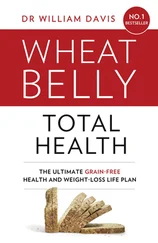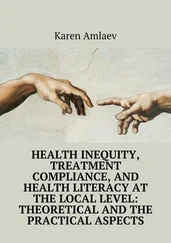9 Chapter 13 Figure 13.1Factors influencing malaria using Dahlgren and Whitehead’s model as a framework … Figure 13.2Factors influencing cervical cancer using Dahlgren and Whitehead’s model as a fr… Figure 13.3Factors influencing neighbourhood health using Dahlgren and Whitehead’s model as… Figure 13.4Factors influencing COVID-19 using Dahlgren and Whitehead’s model as a framework… Figure 13.5Barton and Grant’s ‘health map’ – an extension of Dahlgren and Whitehead’s model Figure 13.6The Commission on the Social Determinants of Health conceptual framework
1 Chapter 1 Table 1.1The medical model of health compared with the social model of health Table 1.2The lay perspective on health
2 Chapter 2 Table 2.1Changing patterns of disease, illness and health Table 2.2Effects of climate change upon health Table 2.3The impact of safety and security upon health
3 Chapter 3 Table 3.1Assumptions of different philosophical traditions Table 3.2Generating research questions Table 3.3Example research questions and methodological approaches Table 3.4An overview of quantitative data-collection techniques Table 3.5An overview of quantitative probability sampling approaches Table 3.6Levels of measurement Table 3.7An overview of qualitative data-collection techniques Table 3.8An overview of qualitative sampling approaches Table 3.9Stages of drawing upon evidence
4 Chapter 4 Table 4.1Summary and critique of explanations of health inequalities
5 Chapter 6 Table 6.1Different types of behaviour
6 Chapter 7 Table 7.1Different types of models
7 Chapter 11 Table 11.1Policy changes to English organ donation Table 11.2Ideological positions and their implications for health
8 Chapter 12 Table 12.1Comparison of life expectancy and healthy life expectancy, 2020 Table 12.2Disparities in global health-care spending Table 12.3The key actors in global policy-making Table 12.4An overview of the Sustainable Development Goals
9 Chapter 13 Table 13.1Determinants of malaria Table 13.2Determinants of cervical cancer Table 13.3Determinants of unhealthy neighbourhoods Table 13.4Determinants of COVID-19
1 Chapter 1 Case Study 1Concepts of health and open defecation
2 Chapter 2 Case Study 2Global antibiotic resistance
3 Chapter 3 Case Study 3Digital data
4 Chapter 4 Case Study 4The medical management of sleep
5 Chapter 5 Case Study 5The Western culture of well-being
6 Chapter 6 Case Study 6Perspectives on skin bleaching
7 Chapter 7 Case Study 7Using Caplan and Holland’s model to consider different approaches to addressing …
8 Chapter 8 Case Study 8Individual characteristics and the experience of HIV/AIDS
9 Chapter 9 Case Study 9Asset-based community development in Northumberland
10 Chapter 10 Case Study 10Rural Ghana: the impact of the physical environment on health
11 Chapter 11 Case Study 11Policy approaches to reducing inequalities
12 Chapter 12 Case Study 12Action on the global social determinants of health
13 Chapter 13 Case Study 13Malaria Case Study 14Cervical cancer Case Study 15Neighbourhoods Case Study 16COVID-19
1 Chapter 1 Learning tasks 1.1Defining health Learning tasks 1.2Comparing definitions Learning tasks 1.3Influences upon health Learning tasks 1.4Different people, different definitions
2 Chapter 2 Learning tasks 2.1The significance of health threats Learning tasks 2.2Hypertension and health Learning tasks 2.3HPV media coverage Learning tasks 2.4Analysing trends in life expectancy
3 Chapter 3 Learning tasks 3.1Where do I begin in thinking about my research project? Learning tasks 3.2Choosing an appropriate method for your project Learning tasks 3.3Sampling for your project Learning tasks 3.4Appraising evidence for your project
4 Chapter 4 Learning tasks 4.1Developing your sociological thinking about health Learning tasks 4.2Thinking about social influences upon health Learning tasks 4.3Stigma and health: biographical disruption Learning tasks 4.4The social construction of disability
5 Chapter 5 Learning tasks 5.1Reflecting upon why culture matters Learning tasks 5.2Exploring your own lay beliefs Learning tasks 5.3Healthworld, culture and environment Learning tasks 5.4Cultural representations of mental illness
6 Chapter 6 Learning tasks 6.1Reflection on changing behaviour Learning tasks 6.2Reflection on changing behaviour Learning tasks 6.3Determinants of health behaviour Learning tasks 6.4Limitations of models of behaviour change
7 Chapter 7 Learning tasks 7.1What do you think health promotion is? Learning tasks 7.2Applying Beattie’s model of health promotion Learning tasks 7.3Behaviour-change campaigns Learning tasks 7.4Ethics in health promotion
8 Chapter 8 Learning tasks 8.1Individual characteristics and health Learning tasks 8.2The Avon Longitudinal Study of Parents and Children Learning tasks 8.3Personality and motivation Learning tasks 8.4The nature/nurture debate and individual differences
9 Chapter 9 Learning tasks 9.1Your social network map Learning tasks 9.2Measuring social capital Learning tasks 9.3Example of a connected community? Learning tasks 9.4Communities and social capital
10 Chapter 10 Learning tasks 10.1The physical environment and health Learning tasks 10.2Food scares and health Learning tasks 10.3Community-led total sanitation (CLTS) Learning tasks 10.4The influence of the working environment upon health
11 Chapter 11 Learning tasks 11.1The UK media and policy influence Learning tasks 11.2Making health policy work Learning tasks 11.3Ideological beliefs Learning tasks 11.4Policy sectors and health implications
12 Chapter 12 Learning tasks 12.1Global health challenges Learning tasks 12.2Investigating the impact of health professional migration Learning tasks 12.3Globalization, the environment and health Learning tasks 12.4Were the Millennium Development Goals a success?
13 Chapter 13 Learning tasks 13.1Using Dahlgren and Whitehead as an analytical tool Learning tasks 13.2Strategies for tackling health problems Learning tasks 13.3Evaluating Dahlgren and Whitehead’s rainbow model Learning tasks 13.4Building on the rainbow model of health
Читать дальше












